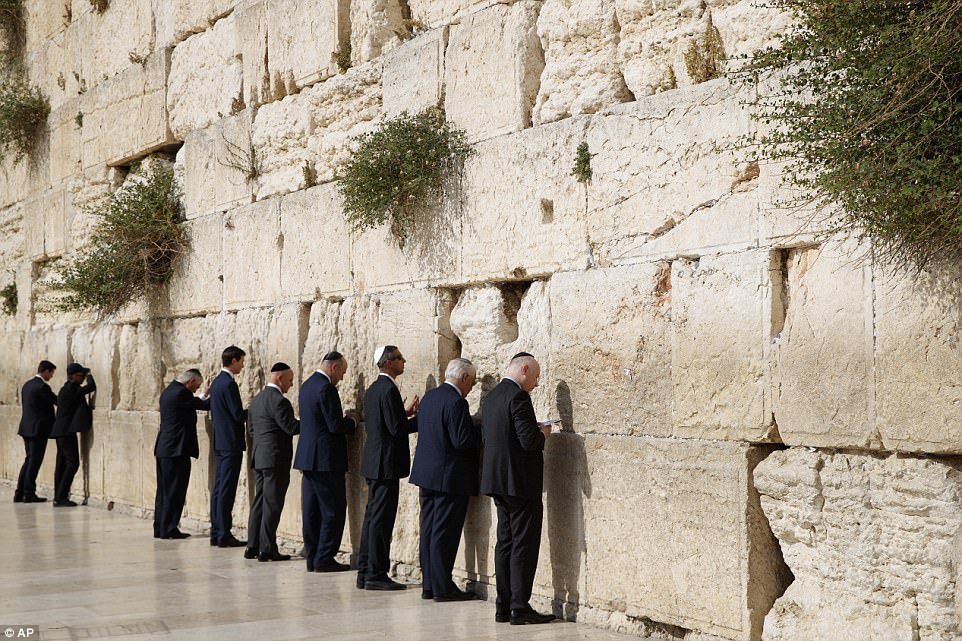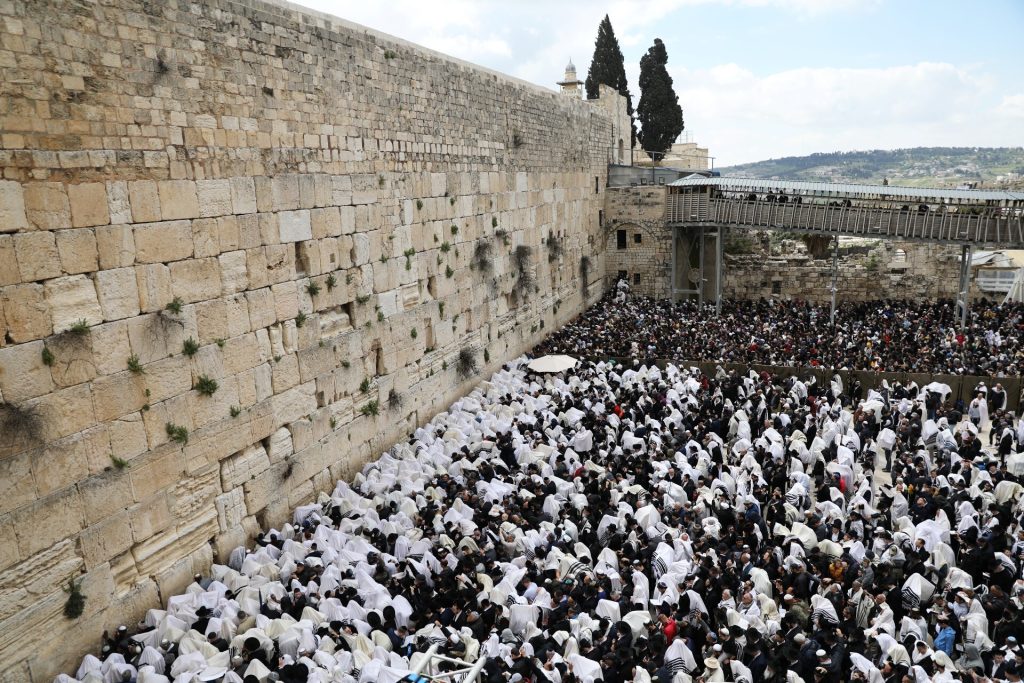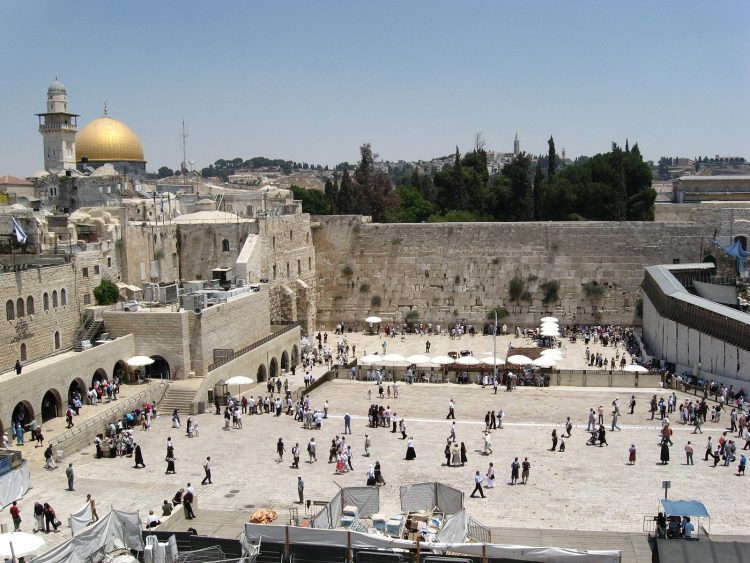In the Old City of Jerusalem, Israel, is hidden an ancient and mysterious stone wall – the Wailing Wall. This wall, with its thick historical background and deep cultural connotation, has become the sustenance of the Jewish national soul, and is also a holy place for tourists from all over the world to visit.
The Weeping Wall, also known as the Western Wall, is a section of the parapet of the Second Temple in the Old City of Jerusalem. It bears witness to the splendor and decline of the Jewish people in history and carries the vicissitudes of the Jewish nation. The wall is not only a witness to a period of history, but also an important symbol of Jewish culture and faith.
A witness to history
The Wailing Wall dates back to the Ancient Jewish period between 966 and 586 BC and was part of the second wall built by the Jews. At that time, Jerusalem was the political, religious, and cultural center of the Jewish people, and the Wailing Wall was an important line of defense for the city. It used to guard the Jewish homeland against foreign invaders.
The course of history has not been smooth. In 586 BC, the neo-Babylonian king Nebuchadnezzar II captured Jerusalem, destroyed Solomon’s Temple, and the Jews were forced to leave their homeland, beginning a period of great migration that lasted more than two thousand years. During this time, Jews were displaced and scattered around the world. However, no matter where they are, they always carry in their hearts the yearning and nostalgia for Jerusalem. The Western Wall, a symbol of their former home, has become a sacred place for their spiritual sustenance.

Second, the place of faith
In Judaism, Jerusalem is considered a holy place given by God, and the Wailing Wall is the core of the holy site. It is not only a symbol of the Jewish faith, but also a sacred place for them to communicate with God. Every year, thousands of Jews from all over the world come here to face the Wailing Wall and whisper their prayers, reminisce about history and seek solace.
In front of the Western Wall, Jews write their wishes and prayers on slips of paper and insert them into the cracks of the wall. They believe that by doing so, they can make their voices heard by God and fulfill their wishes. The power of this belief makes the Wailing Wall a place full of mystery and sacred atmosphere.
Three, the artistic treasures of architecture
The Western Wall not only has profound historical and cultural connotations, but also is an artistic treasure of architecture. It is about 20 meters high and more than 50 meters long, and is made of huge stones. The stones have been carefully polished and spliced to create a strong and beautiful wall. In the cracks between the stones, you can even see ancient inscriptions and patterns, highlighting the unique charm of Jewish culture.
It is worth mentioning that there is also a mysterious rectangular box embedded in the rock below the western wall, known as the “Joya Tunnel”. It is said that this is the place where the Jews told their secrets to God in ancient times, so it is also called the “wall of sighs.” This mystery further deepens the sacred status of the Western Wall in the hearts of Jews, and also adds a mysterious color to the ancient wall.
Iv. Influence and enlightenment on later generations
As a symbol of Jewish history and culture, the Western Wall has had a profound impact on later generations. It not only inspired the Jewish people’s love and adherence to their homeland, but also became a spiritual bond of solidarity and mutual help for Jews around the world. Every major festival or anniversary, Jews will gather in front of the Western Wall to remember the history and pray for the future and prosperity of the nation. This cohesion and centripetal force allowed the Jewish nation to survive and grow even after suffering.
The Western Wall has also attracted countless tourists to visit and feel this rich history and unique cultural atmosphere. It has become an important cultural card for Jerusalem and Israel to show the world the resilience and faith of the Jewish people. Many tourists have gained a deeper understanding of Jewish culture and history after visiting the Western Wall, which also promotes the exchange and integration between different cultures.
The Wailing Wall also reminds us of the importance of cherishing peace and keeping faith. In the long history, the Jews have experienced countless wars and disasters, but they have always held fast to their faith and cultural traditions. This kind of indomitable spirit is worthy of our learning and reference. At the same time, the Western Wall also reminds us not to forget history, remember the past, and cherish the hard-won peace and prosperity.
In modern society, the significance of the Western Wall has gone beyond the scope of religion and nationality, and has become a common cultural heritage and spiritual sustenance of all mankind. It is not only a wall, but also a witness of history, a sustenance of faith and a cultural inheritance. No matter how The Times change, the Western Wall will continue to stand on the sacred land of Jerusalem as a witness to the prosperity and development of the Jewish people and a message of peace and hope to the world.

Fifth, the modern significance and value of the Western Wall
With the progress of The Times and the development of society, the modern significance and value contained in the western wall have become increasingly prominent. First of all, it has become an important link to promote cultural exchanges and national unity. Jews from all over the world come together here to remember history, share stories and experiences, and this cohesion helps to strengthen national unity and promote cultural exchange.
The Western Wall has also become an important resource for tourism and cultural education. More and more tourists come here to experience the unique charm of Jewish culture and learn about the history and traditions of the Jewish people. This not only helps to promote the development of tourism, but also injects new vitality into cultural inheritance.
The spirit of perseverance and firm faith carried by the Western Wall also inspires modern people to go forward and persevere in the face of difficulties and challenges. This spiritual strength has a positive impact on both personal growth and social development.
As the witness of history, the inheritor of culture and the place of faith, the Western Wall of Israel has always been the destination of Jewish hearts. It bears witness to the vicissitudes of the Jewish nation





















